Abstract
It has recently been demonstrated that salicylic acid (SA) may serve as an endogenous signal molecule in the induction of systemic acquired resistance in tobacco and cucumber. In addition, SA is an endogenous regulator of heat and odor production in the inflorescence of some thermogenic plants. No information, however, is currently available concerning the mode(s) of action of SA in plant signal transduction. In a search for possible cellular factors that directly interact with SA, we have detected and partially characterized a SA-binding protein in tobacco leaves. The SA-binding activity is both SDS and proteinase sensitive and behaves as a soluble protein with an apparent mass of 650 kDa. The protein has an apparent Kd of 14 microM for SA, which is consistent with the range of physiological concentrations of SA observed for the induction of plant resistance responses. Furthermore, the ability of SA analogues to compete with SA for binding to this soluble protein is strictly correlated with their biological activity to induce the expression of genes associated with disease resistance. Biologically active analogues effectively inhibit SA binding while biologically inactive analogues do not. These results collectively indicate that this SA-binding protein may play a role in perceiving and transducing the SA signal to appropriate response elements, which ultimately activate one or more of the plant disease-resistance responses.
Full text
PDF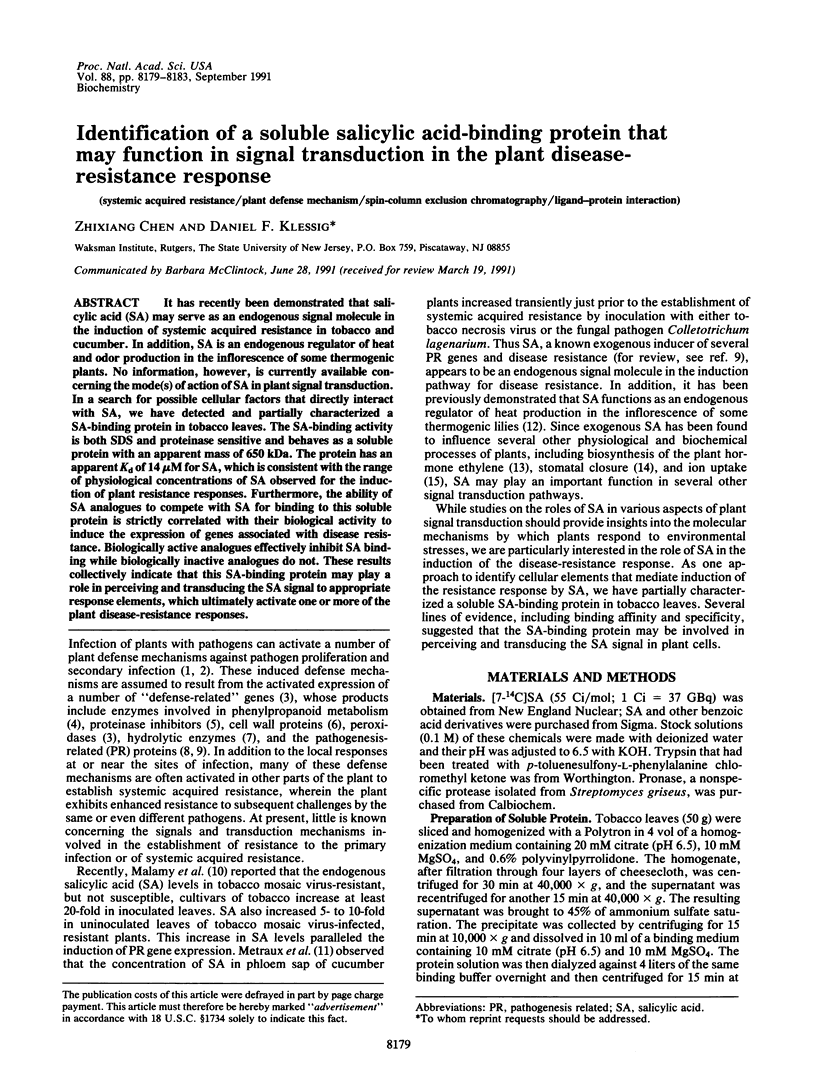
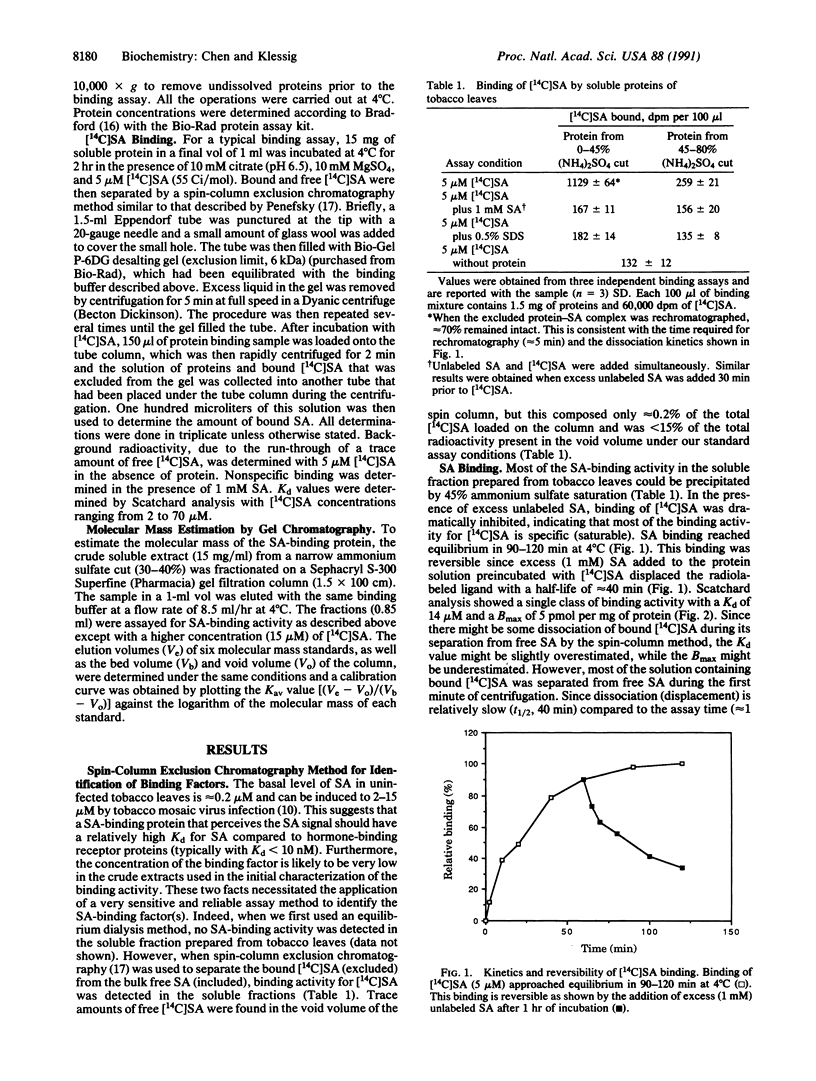
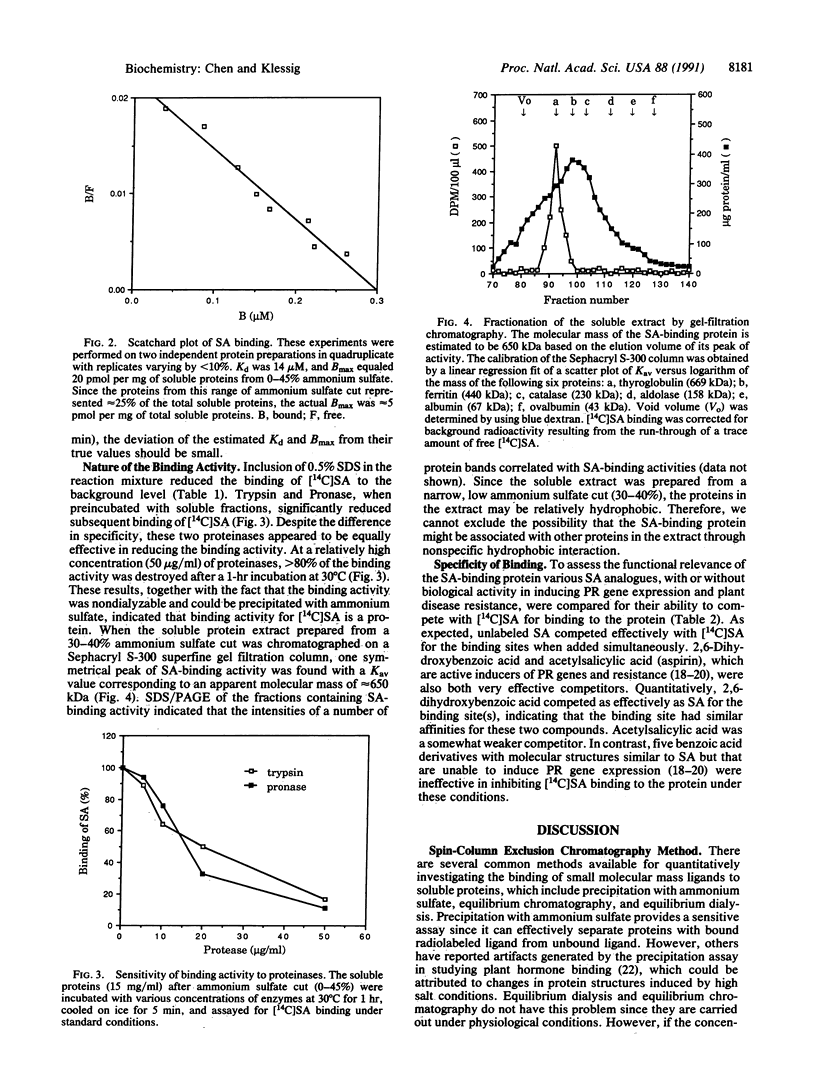
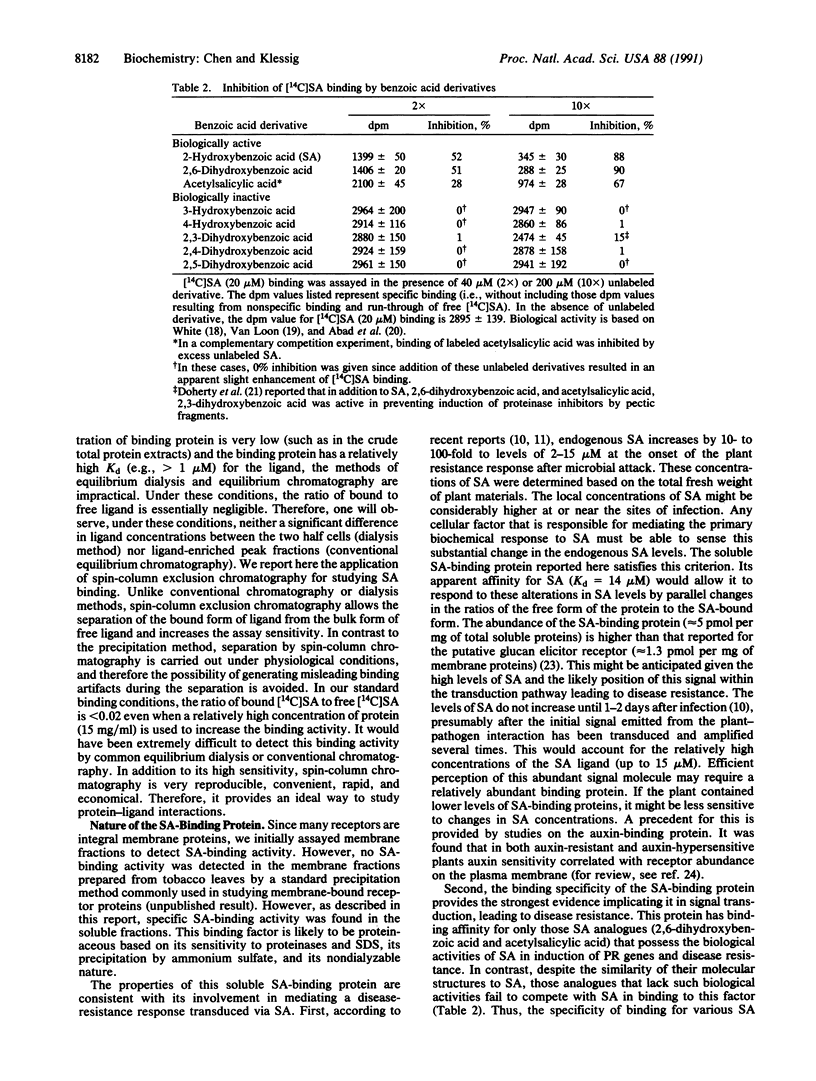
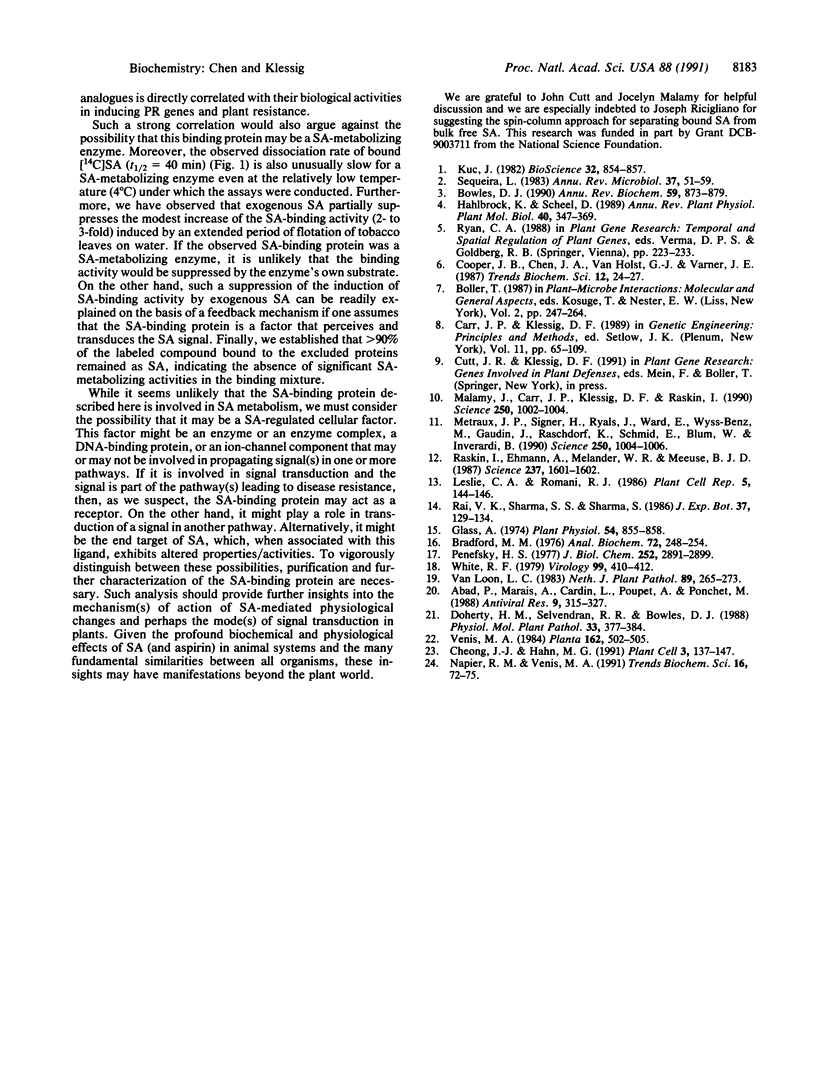
Selected References
These references are in PubMed. This may not be the complete list of references from this article.
- Abad P., Marais A., Cardin L., Poupet A., Ponchet M. The effect of benzoic acid derivatives on Nicotiana tabacum growth in relation to PR-b1 production. Antiviral Res. 1988 Aug;9(5):315–327. doi: 10.1016/0166-3542(88)90026-5. [DOI] [PubMed] [Google Scholar]
- Bowles D. J. Defense-related proteins in higher plants. Annu Rev Biochem. 1990;59:873–907. doi: 10.1146/annurev.bi.59.070190.004301. [DOI] [PubMed] [Google Scholar]
- Bradford M. M. A rapid and sensitive method for the quantitation of microgram quantities of protein utilizing the principle of protein-dye binding. Anal Biochem. 1976 May 7;72:248–254. doi: 10.1006/abio.1976.9999. [DOI] [PubMed] [Google Scholar]
- Cheong J. J., Hahn M. G. A specific, high-affinity binding site for the hepta-beta-glucoside elicitor exists in soybean membranes. Plant Cell. 1991 Feb;3(2):137–147. doi: 10.1105/tpc.3.2.137. [DOI] [PMC free article] [PubMed] [Google Scholar]
- Glass A. D. Influence of Phenolic Acids on Ion Uptake: IV. Depolarization of Membrane Potentials. Plant Physiol. 1974 Dec;54(6):855–858. doi: 10.1104/pp.54.6.855. [DOI] [PMC free article] [PubMed] [Google Scholar]
- Malamy J., Carr J. P., Klessig D. F., Raskin I. Salicylic Acid: a likely endogenous signal in the resistance response of tobacco to viral infection. Science. 1990 Nov 16;250(4983):1002–1004. doi: 10.1126/science.250.4983.1002. [DOI] [PubMed] [Google Scholar]
- Métraux J. P., Signer H., Ryals J., Ward E., Wyss-Benz M., Gaudin J., Raschdorf K., Schmid E., Blum W., Inverardi B. Increase in salicylic Acid at the onset of systemic acquired resistance in cucumber. Science. 1990 Nov 16;250(4983):1004–1006. doi: 10.1126/science.250.4983.1004. [DOI] [PubMed] [Google Scholar]
- Napier R. M., Venis M. A. From auxin-binding protein to plant hormone receptor? Trends Biochem Sci. 1991 Feb;16(2):72–75. doi: 10.1016/0968-0004(91)90028-t. [DOI] [PubMed] [Google Scholar]
- Penefsky H. S. Reversible binding of Pi by beef heart mitochondrial adenosine triphosphatase. J Biol Chem. 1977 May 10;252(9):2891–2899. [PubMed] [Google Scholar]
- Raskin I., Ehmann A., Melander W. R., Meeuse B. J. Salicylic Acid: a natural inducer of heat production in arum lilies. Science. 1987 Sep 25;237(4822):1601–1602. doi: 10.1126/science.237.4822.1601. [DOI] [PubMed] [Google Scholar]
- Sequeira L. Mechanisms of induced resistance in plants. Annu Rev Microbiol. 1983;37:51–79. doi: 10.1146/annurev.mi.37.100183.000411. [DOI] [PubMed] [Google Scholar]


